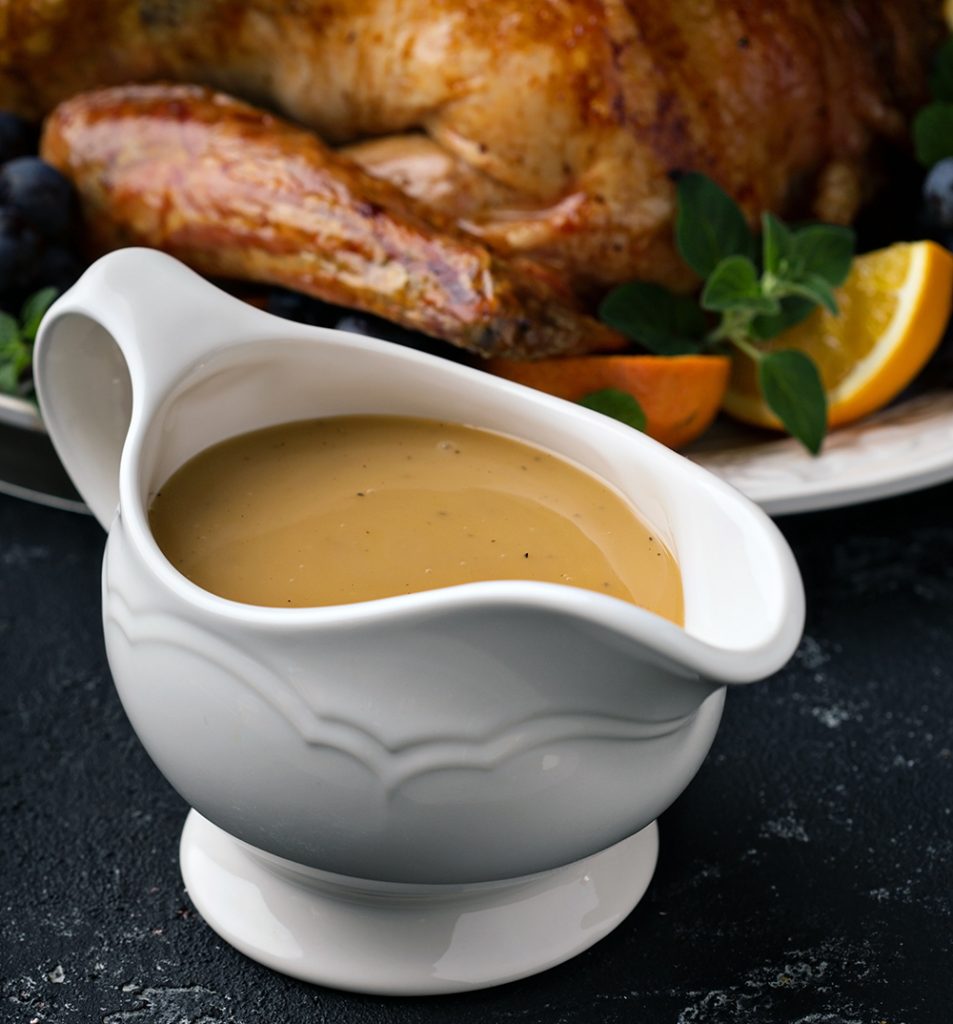
Twenty twenty has been a wretched year for many of us, one we can’t say goodbye to soon enough. Despite all of it, let’s hope each of us can find much to be grateful for on November 26, Thanksgiving Day. As I write this, I am grateful for the life of a good friend we lost recently to Covid; I’m thinking especially of his heartbroken family. And I am extremely thankful that I, my hubs and extended family so far remain Covid-free. I hope, as you read this, you and your family are virus-free as well. But we know that footing can change very quickly. Which is why we should all feel comfortable declining—or not extending—invitations for the sort of large Thanksgiving gatherings we have hosted or attended in the past. People understand this simply is not the year for big, elbow-to-elbow get-togethers.
But that doesn’t mean we can’t have a lovely, cozy Thanksgiving dinner with our “quaranteam” (and perhaps have a virtual meeting with your larger group at some point in the day). Here are some ideas and pointers for serving Thanksgiving dinner to a small gathering.
Embrace the Smallness
Serving dinner to a smaller bunch means you can use Grandma’s dish set, of which you have only four place settings. It means, since you’re not worried about seating all those people, you can focus on setting one, small, beauteous table. If you have a larger home, it can even liberate you from your dining room. You can set up a snug little table in front of the fireplace or eat at the kitchen island. It also gives you a chance to sink back and have a real conversation with those at your table over a leisurely, delicious dinner.
And Speaking of the Meal
Is it just you doing the cooking? You’ll still have a feast just by sticking to the essentials: turkey, dressing, cranberry relish, potatoes, gravy, and a vegetable of some kind. (Email me, I’ll send you my favorite recipes.) Know that there is no crime whatsoever in ordering a complete takeout dinner from your favorite restaurant, grocery store, or club. And if your little pod is not fond of a turkey dinner, who’s to stop you from making stir fry?
There’s no need to bake a pie, darling, unless you love to make pies. You can buy a good one the day before at a restaurant or bakery, but remember to order it early. I’ll probably order mine from Ashleigh’s Bake Shop in Westport. Her pies are first rate, and she offers curbside service
Let’s Talk About That Bird
If there are only two or three of you, consider roasting a turkey breast instead of the entire bird. Your house will still smell like Thanksgiving, but without all the to-do of a turkey. And you’ll have more room in your oven for your sides. But you won’t have dark meat, and you won’t have that Norman Rockwell moment of pulling a gleaming roasted turkey out of the oven to cries of delight. My friend Amante Domingo, the talented chef who co-owns The Russell, a popular restaurant at 31st and Main Street in Midtown (where Russell Florist used to be—get it?) shared with me his secrets for the perfect turkey for a smaller crowd.
Turkey Advice From Amante
Great cooks think ahead. Amante says give your turkey tons of time to thaw in the refrigerator or under cold running water. “Skip this step and things will turn out horribly,” he says. For every four pounds of turkey, allot 24 hours of defrosting. For a five- to six-pound turkey, you want at least 36 hours to defrost. To be on the safe side, move your frozen turkey into the fridge Tuesday night.
Buy small. A pound and a half per person is plenty when calculating the size of your bird. The yield when the bird cooks will work out to about a pound of meat a person. If you are feeding four or five people, a six-pound turkey is perfect. Amante says he likes to braise one turkey—cut into parts—and then roast a small, whole turkey for show. “The braising liquid makes wonderful gravy and gives you tons of juice for dressing/stuffing,” he says.
Try something new. Amante encourages you to experiment with your bird. Don’t be intimidated—treat it like you would a large chicken, remembering it has to reach an internal temperature of 165. “Have a goal in mind for presentation and taste before you start,” Amante says. “Some years I cut the turkey in half and cook it slowly on my trusty old Weber.”
“Other years I have brined the turkey overnight, then roasted it in the oven on a bed of onions, herbs and potatoes, which elevates the bird a bit, to allow heat underneath. The fats and juice drip onto the potatoes and onions making them super-tasty,” he says.
Skip the baste. “I personally feel like basting makes the oven dip in temperature from opening it frequently,” says Amante. He advises placing a small dish of water in the oven to help make it humid, then cranking up the heat after the bird is cooked to crisp it up.
Rub it in. “You know that messy spice cabinet you have? With those three open containers of Italian seasoning you forgot about? Make a spice blend,” says Amante. He says he gets good salt and peppercorns and simply adds the old spices to his grinder or blender to make his own rub. He advises equal parts salt, pepper, garlic, onion, and Italian seasoning. “Get that rub and literally put it in every crack, crevice, inside and outside of the bird. This covers the feelings on flavor. It can be sweet, spicy and zesty.”
Butterball forever. Amante and I both agree we’ve neither of us had a good experience with a “heritage” or “organic” or “pasture-raised” turkey. Unvaryingly, they’ve been dry, gamey-tasting, horrendously overpriced. Our advice is save your money and go Butterball.
Amante says he is willing to share his recipes for brine and turkey dressing. Email me and I’ll send them to you.
Shop as Early as Possible
Scurrying out to the store the night before Thanksgiving is the last thing you want to do. This year especially, it’s good to avoid the mobbed supermarkets. Well in advance of Thanksgiving, make sure you have the following ingredients on hand: butter (lots!); chicken stock (homemade is best but canned or boxed is okay); aromatics like garlic, onions, shallots, leeks, fresh ginger; fresh citrus; sturdy, branch herbs like rosemary, thyme, and bay leaves; light brown sugar; and the creams: heavy, sour, and ice.
And finally, lay in a supply of Champagne before they hike up the prices for the holiday. And stock up on wine. Even if you’re not drinking it, it can be splashed into gravy or vegetable dishes, or used to deglaze the turkey roasting pan. White burgundy, chardonnay, beaujolais and pinot noir all taste scrumptious with a turkey dinner!
Make-Ahead Gravy
Here’s a great secret: There’s no need to make gravy right before serving. You can make it up to five days ahead. Then, as you reheat it, whisk in the turkey pan drippings for extra flavor.
- 1 stick butter
- ½ cup chopped onion
- ½ cup flour
- Salt and pepper
- 4 to 5 cups chicken, turkey or vegetable stock, the richer the better, warmed
- Turkey drippings and giblets (optional)
In a heavy, medium-sized saucepan melt butter over medium heat, then add onions. Cook, stirring occasionally, until onions are translucent, about 5 minutes. Sprinkle the flour on the onions, stirring constantly, and cook until flour is golden to brown. Adjust heat so mixture does not burn.
Gradually whisk in 4 cups stock until mixture thickens and is smooth. If it is too thick, add more stock or water. Cool, cover and chill.
Just before you’re ready to serve, reheat mixture over low heat, stirring. If you’re roasting a turkey, scrape the bottom of the pan and add drippings or giblets to gravy. Taste and adjust seasoning, then serve.
Email me with your entertaining questions, dilemmas, or triumphs at mjackson@inkansascity.com



